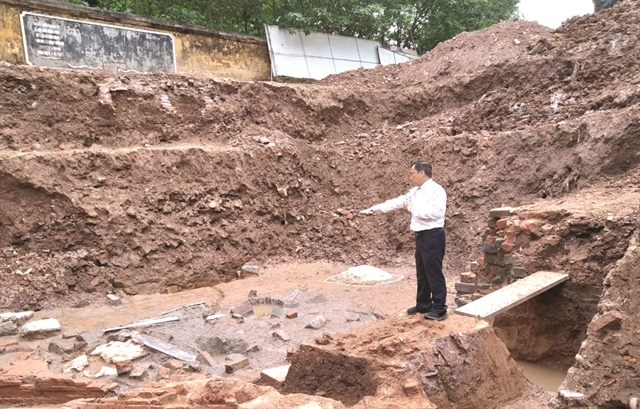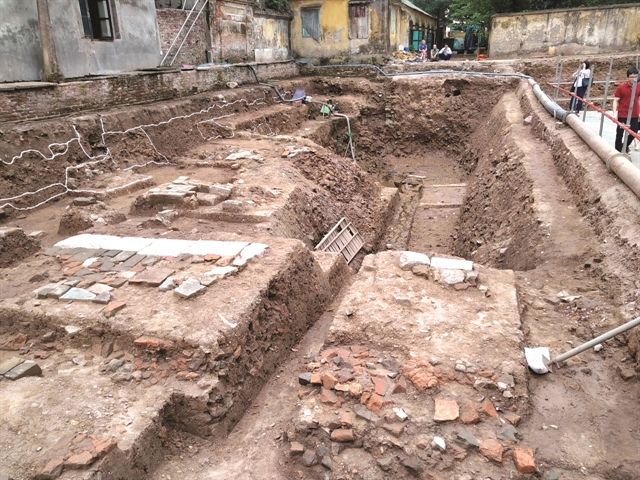 Life & Style
Life & Style

New archaeology discoveries in an excavation area of nearly 1,000sq.m to the northwest of Kính Thiên Palace at the Imperial Citadel of Thăng Long in Ha Noi were announced on Thursday.

|
| Dr Tống Trung Tín, Chairman of the Vietnam Archeology Association at the excavation area. VNA/VNS Photos Minh Thu |
New archaeology discoveries in an excavation area of nearly 1,000sq.m to the northwest of Kính Thiên Palace at the Imperial Citadel of Thăng Long in Hà Nội were announced on Thursday.
Some highlights of the discoveries are the deepest well that has ever been exploited by the archaeologists, the largest pot with a diameter of 1.2m dating to Trần Dynasty (1225-1400) and a brick burial site.
Dr Tống Trung Tín, Chairman of the Vietnam Archeology Association, said at 3.3m deep, the scientists found five layers of overlapping cultures.
At a depth of 1.3m, they unearthed a well of nearly seven metres deep, the deepest of its kind ever been found by Vietnamese archaeologists.

|
| The archaeologists examine the newly discovered well. |
“In 1952, Dr Bùi Minh Trí, head of the Centre for Thăng Long Royal Citadel Research, and I excavated a well of 5.9m deep. It is such a long time since I have seen a well of such depth, which is estimated to be deeper than the average depth of the Red River," he said.
Nearby, the archaeologists found a large pot decorated with floral designs. The pot, 1.2m in diameter and 55cm high, might be the largest intact terracotta pot dating to the Trần Dynasty ever unearthed in Việt Nam.
Also within the area, the archaeologists have made the biggest discovery since the beginning of the excavation - an ancient brick burial site.
“This is the central area of the Imperial Citadel so we wonder why there were burials here. Therefore, it can be assumed that this burial site was constructed before the Imperial Citadel. The site is located in the deepest layer, revealing traces of human settlement at a quite early period, from the 4th-6th centuries," Tín said.

|
| The pot, 1.2m in diameter and 55cm high, might be the largest intact terracotta pot dating to the Trần Dynasty ever unearthed in Việt Nam. |
The excavation in 2020-2021 has revealed many new discoveries that help to verify the value of the Imperial Citadel of Thăng Long through thousands of years of history.
There are still many unknowns that need further discussion, such as a wide circular architecture, which seems popular in the architecture of the Trần Dynasty, but its meaning and purpose have not yet been determined.

|
| The excavation area covers a total area of nearly 1,000sq.m to the northwest of the Kính Thiên Palace. |
“In the world, there are a few capitals that still preserve such a complex of relics containing such a long history-culture and overlapping constant cultural layers.
This is an outstanding feature that contributes to the great value and uniqueness of the Imperial Citadel of Thăng Long that has been recognised by UNESCO," Trí said. VNS

|
| Some artefacts from the excavation of the Imperial Citadel of Thăng Long in 2020-2021. |




